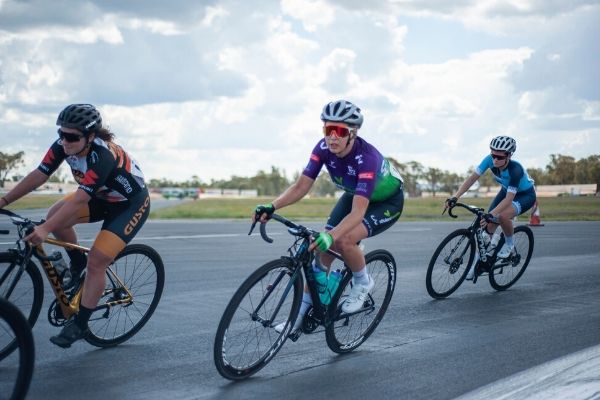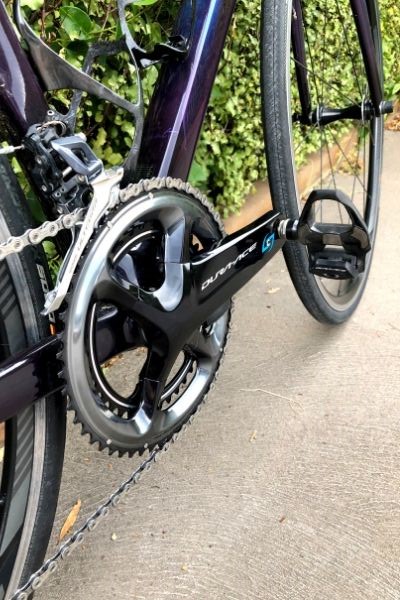Training to Power
Training to Power
It makes sense that in order to improve your performance on the bike, or any sport, you have to train to certain levels and push your limits. This might be about training to a sustained effort to improve your base fitness, efforts that exceed your ability to sustain to help raise that threshold limit, or you might hit your session with a stack of maximal explosive efforts to help hone in on your explosive power and quick response time. All of these methods though are set with a purpose, and with parameters to be really effective and generally, you are tracking your effort as you go.
There are a few ways you can set the parameters to track the efforts and keep you in check when it comes to riding a bike. My coach, Justin Morris at Mind Matter Training uses three different methods when setting my efforts;
- Race perceived efforts
- Heart rate
- Power meter
So, I will explain each one, and when we might apply one.
Race Perceived Effort
Or, more commonly known in my training diary – RPE. RPE is particularly useful when fatigue has settled in or coming back from injury when numbers might not be accurate in other forms. When you are really fatigued, you may be unable to hit the power numbers and this can be disheartening, so RPE can really take the mental burden off the session also.
Basically, as long as it hurts, your doing it right! In these sessions we set a 7 to threshold (sustainable but hard effort), 9-10 is max, and a 5or less would be a coffee ride/recovery. This style of measurement I find really helps me for time trials because it makes me in tune with what an effort feels like, they are also useful for 5-10second maximal efforts when it can be near impossible to look at your power output for that short period of time.

Heart Rate
Probably the most inaccurate and the one we use the least. While HR is an accurate measurement of your effort, it takes a while to respond to the effort. It won’t react in time to come down for a thirty second rest between efforts and therefore you won’t actually know how hard you are working.
So, heart rate can be helpful to see spikes with long breaks, or sitting at a sustained effort i.e. a 30minute effort. Another important consideration with heart rate is that it can be quite effected by factors such as temperature; which will drop it if it is cold and not allow it to peak as high, or elevate it in heat and not allow it to drop and recover. While fatigue will prevent it from raising as well.
Heart rate might be useful to consider when you are on the attack in a race or time trial when you look down and can see it peaking, knowing your zones helps you to understand that perhaps the effort you are putting in isn’t sustainable and you can back it off. This might be one of the times I consider heart rate as a tool of measurement.
Power Meter
A power meter is generally where I like to train from. A power meter works by measuring the force applied to the component and the measurement used is watts. The component might be the crank, pedal or hub and may be left sided or duel sided. A duel sided means that you can measure each leg and therefore get an understanding of whether each is working to the same extent which can be very helpful for a smooth pedal stroke.
A power meter allows you to see your power as you ride (assuming you have a computer like a Wahoo or Garmin hooked up), which means you can sit within set zones that your coach or yourself might set for your session and the data is available immediately to you (typically a 3 second average).
This means I can go from a recovery zone to a full max effort in the space of seconds and know I am actually hitting the right numbers and backwards again from effort to recovery.
When you understand your training zones, you also know what number is your functional threshold power (FTP) and therefore the amount of power you can sustain over an extended period of time, you know that if your exceeding that for an extended period of time without recovery it’s unlikely you will be able to sustain it and you know what an easy recovery spin number is like. The power that everyone trains at and can hit is very different.
What I like about the power meter is the immediate the true feedback. This can also be frustrating if the numbers are not what you want, or bliss when you’re exceeding them. Coming back from injury, my power meter numbers haven’t quite been up to where I want them to be, but that is expected.

I have always used a Stages Power meter, starting out with a second-hand left crank only. When I first started, I didn’t care too much what the numbers where, what they meant and if I hit them. But now I have much bigger goals and the numbers start to mean more. I want that feedback and to see my data. I recently upgraded to the dual sided dura-ace power meter which shows me the contribution of power from each leg. This has been very helpful for me as one component of my injury was my left hip. So, ensuring that my efforts were roughly split 50/50 to each leg has been very important to know that my body is aligned and to hopefully not cause any more injury.
I still have plenty of work to go before I am hitting some of the numbers I saw preinjury, but they are slowly on the improve and that’s a big plus for me.
More about Nicole Frain

FE Sports Ambassador for Stages Cycling, Nicole Frain has always had an interest in health and fitness, and this has followed her into all areas of her life.
Nicole currently competes in competitive road cycling, racing for the Tasmanian Institute of Sport Women’s Race Team and participates in national and international cycling events. Nicole has also had experience in triathlon and fitness/bikini competitions in natural federations before pursuing cycling.
On top of work and training Nicole is currently completing her Bachelor of Food Science and Nutrition part-time through Federation University and is also a qualified personal trainer. Wow!
Follow her Athlete Instagram Account Here: https://www.instagram.com/_nicolelouise_/
Check out her Clean Treats Instagram Account Here: https://www.facebook.com/cleantreats1
Check out her Clean Treats Facebook Account Here: https://www.instagram.com/cleantreats_/
Share this Blog!
Just click the links below:

